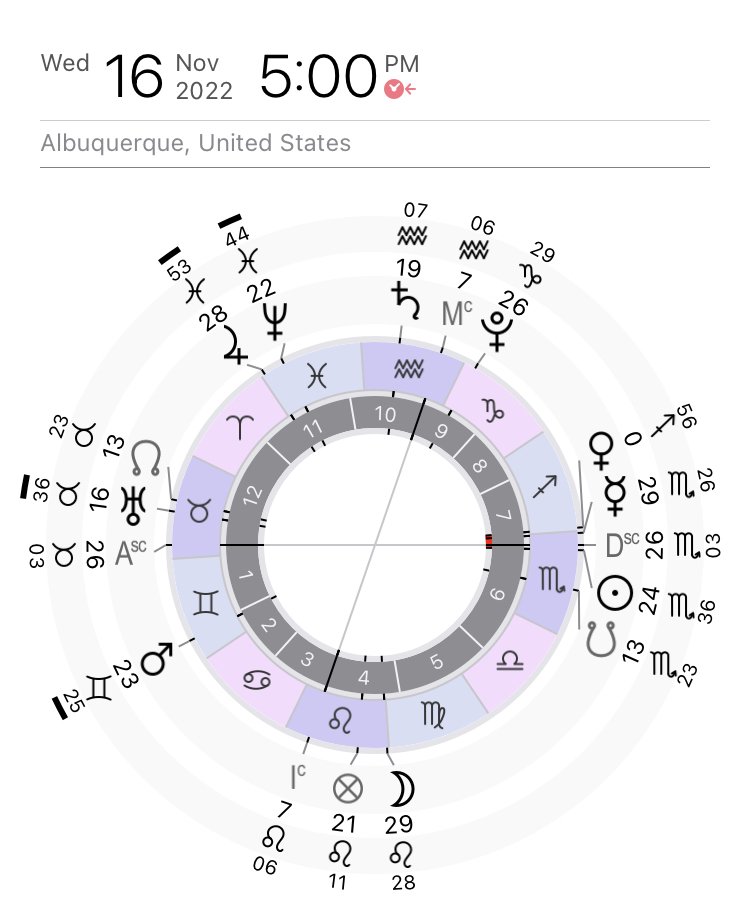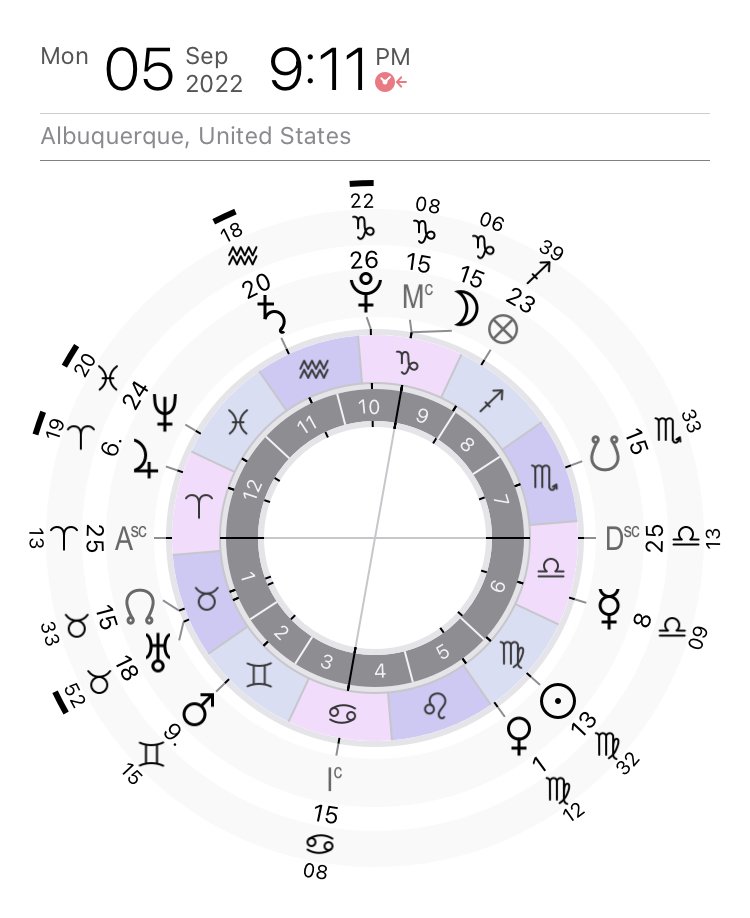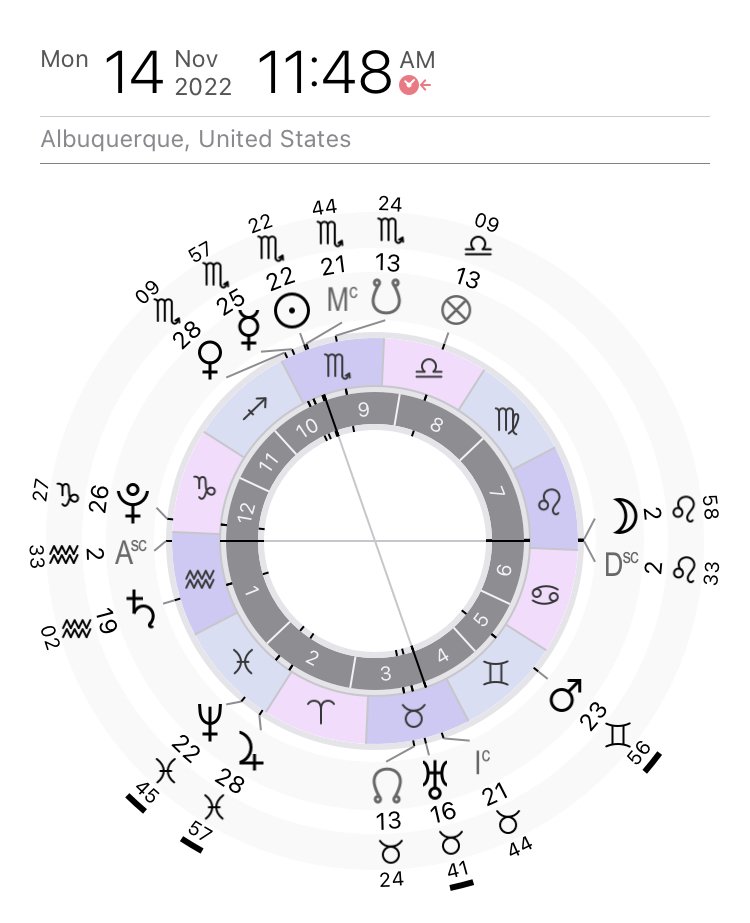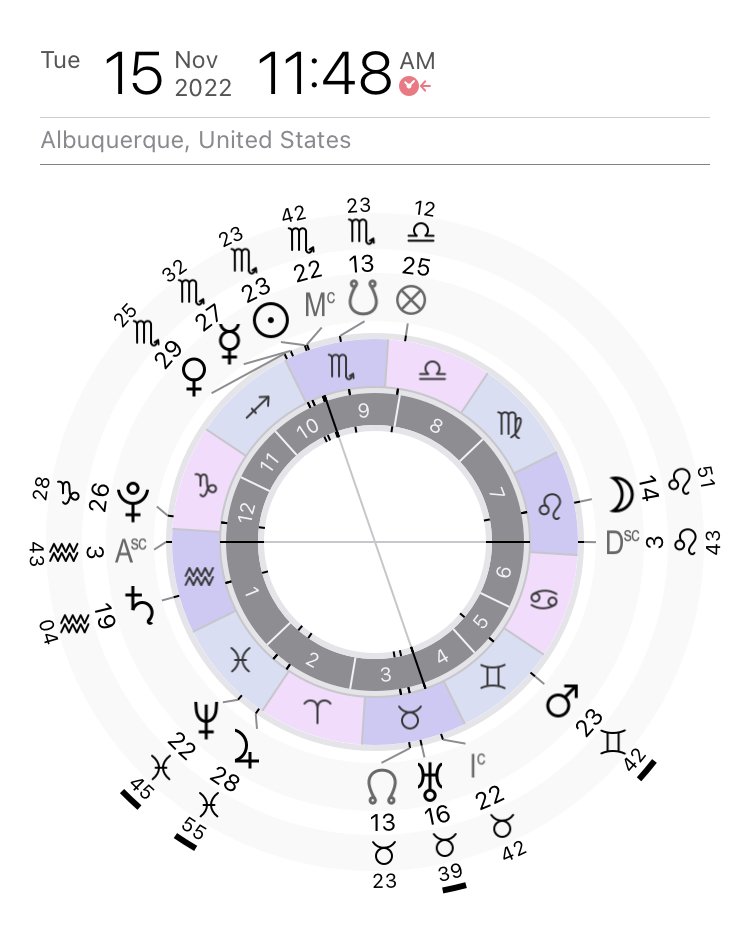coursing through the void
defining the void of course moon
This article aims to discuss the two competing definitions of the void of course Moon and present my argument for why I think the dynamic definition makes the most sense from both the functional and historical standpoint.
The void of course Moon is one of the tenets of electional astrology with the most sticking power by far. Even in the earliest days of the revival of astrology in the 20th century, when the entire art of electional astrology lay patiently resting in the grave for its eventual rebirth, astrologers were discussing this technique. The reasons for this are beyond the scope of today’s discussion but suffice to say: there’s something special about the void of course Moon.
If you aren’t familiar with the term, my working interpretation of void of course is a time in which the Moon is disconnected from the other planets and operating along her own accord. Medieval astrologers saw her aspects to other planets as offering a humanizing effect on the Moon; when she strikes out on her own she becomes more animalistic and unpredictable. We might also say that she is wandering aimlessly through the void, that her path is empty of purpose. The seriousness of the void of course Moon varies from time period to time period—to medieval Islamicate astrologers like Sahl ibn Bishr or Abu Ma’shar, it was just one entry on a long list of potential afflictions of the Moon. Some instances of 20th century astrological lore seem to treat it as nigh catastrophic. Without splitting hairs on its specific degree of inauspiciousness, it is something that we are taught to watch out for and avoid in most elections.
Tracing its journey through the nearly 2000s years of texts we have access to today, it’s clear that although the overall concept has persisted for all this time, its definition has meandered from its origins considerably. As Chris Brennan teaches us in his tome, Hellenistic Astrology: The Study of Fate and Fortune, the origins of what we now call void of course in English lie in the Greek term κενοδρομία kenodromía, which Brennan translates as “running in the void” or “running in emptiness.” Isn’t it remarkable how similar that term is to the one we use today in English? It speaks to the way our ancestors treasured the knowledge of our art.
A Commonly Used Definition
By the time it arrived in the 20th century, the void of course¹ had arrived at the following definition:
The Moon becomes void of course when she reaches the point in the sign she’s transiting where she has completed all of the major aspects (conjunctions / oppositions / trines / squares / sextiles) she has made in that sign.
Her next aspect will not perfect until some point after she changes signs.
This is an extremely common occurrence, happening towards the end of every sign the Moon transits. If her last aspect in her sign is relatively late in the sign, as in Example 1, she may only be void of course for a few hours. If her last aspect is on the earlier end of the sign as in the chart, as in Example 2, she may find herself to be void of course for a day or more. Regardless of length, this will occur every couple of days, about 12 times per month.
Surely we must admit that there’s a bit of a contradiction here. Some astrologers, both past and present, claim that the Moon being void of course is a notable affliction, that any endeavor begun under a void of course Moon is bound to amount to nothing. While I’d be willing to concede that this represents some kind of weakness of the Moon, it would have to be a relatively mild one. I find it hard to believe that such a completely inauspicious moment would arise 12 times per month, minimum. That’s a couple times a week!
Example 1: The Moon in Leo at 29º28 is separating from a trine to Mercury in Scorpio by 02’. She is 1º28 from her next aspect, a square to Venus in Sagittarius.
Example 2: The Moon in Capricorn at 15º06 is separating from a trine to the Sun in Virgo by ~2º. She is over 21º from her next aspect, a sextile to Jupiter in Aries.
Lilly’s Dynamic Void of Course, interpreted by Sue Ward & understood by me
Motivated by the original research of Sue Ward², a contemporary astrologer and scholar of William Lilly, a second definition of void of course has emerged:
The Moon becomes void of course when the reaches the point where she is no longer applying an aspect or conjunction to any other body. In other words, the Moon is not connected to any other planet in the sky by an applying major aspect or conjunction.
The next planet she will aspect is outside of the bounds of her orb.
I have been calling this second definition dynamically void of course. In this scenario the Moon’s status is defined by the dynamic applying and separating aspects in the chart, rather than the boundary of a sign.
Example 3: The Moon in Leo at 2º58 is separating from a trine to Jupiter by ~4º. She is ~16º from her next aspect, an opposition to Saturn in Aquarius.
Example 4: A chart cast for exactly 24 hours after Example 3. Note that the Moon still hasn’t perfected her opposition to Saturn. She has gone an entire 24 hours period without perfecting an aspect with another planet.
At moonset in Example 3, Luna is few degrees separated from her last aspect, a trine to Jupiter in Pisces. Although she still has an aspect to make in her current sign (an opposition to Saturn in Aquarius), it won’t perfect for well over 24 hours, as we can see in the chart set for a day later on the right. Luna’s alone on a dark street at night for an entire day—to me this seems like it would better warrant the label of inauspicious. After all, who cares which block of the street the Moon is on? A dark street is a dark street, regardless of where it is. The more useful question is whether she’s alone in the dark or she’s under a streetlight with a friend!
The chart on the left is dynamically void of course. Using the orbs provided by Lilly, 12º, the Moon will not perfect an aspect for the next 12º. Using the Moon’s actual daily motion, she will have only moved 11º53 by the next day. This can be seen in Example 4, where Luna is still applying her opposition to Saturn 24 hours later. In other situations the Moon may be moving faster, in which case she might complete an aspect within 24 hours even though in a given chart she may still be “out of orb” of aspecting another planet.
“Wait, what about the outer planets and the asteroids?”
I bet my left shoe that a shrewd reader is getting ready to remind me that in Example 2 above the Moon has not cast her last aspect in the sign of Capricorn. There’s a trine to Uranus right there! And then a sextile to Neptune! And then a conjunction with Pluto!
I believe it is in incorrect to use the outer planets, nodes, or lots in defining the boundaries of the void of course Moon. The only points which should be considered are those with a visible body, what medieval Arabic-speaking astrologers called a جرم jirm or “orb.”
The visible planets are grounded in our world, their influence manifests in the 7-fold pattern that describes every part of existence on our Earth. This is why they humanize the Moon. When the Moon can perceive one of the other planets on her daily journey, she builds a relationship to that planetary sphere. There are many takes on what the outer planets represent but regardless of your personal philosophy on them, they exist outside of this pattern of 7. Personally, I think of the outers as intense and somewhat alien—certainly not grounding or humanizing!
The other reason I think shoehorning the outers into this technique is misguided is because it comes down to us through the astrological tradition. This is a very ancient technique which has existed nearly as long as horoscopic astrology itself! The technique should be respected by allowing it to speak for itself on its own terms.
Example 5: The Moon in Capricorn at 0º0 is separating from Jupiter in Pisces by ~1º. She nearly a whole sign away from her next aspect, a sextile with that same Jupiter in Pisces.
Don’t forget about Kenodromía, “Hellenistic Void of Course”!
Coming back to the origins of this technique to round out our discussion is the term kenodromía, “running through the void.” In contemporary astrological discourse, this is often called Hellenistic Void of Course.³ Its definition is slightly more specific:
The Moon is running through the void (or “Hellenistic Void of Course”) when she does not perfect any major aspect for a full 30º.
In comparison to the relatively mild affliction of void of course, kenodromía is a much more challenging situation. Here, the Moon will go over two full days without making an aspect. It is also especially rare, happening only a couple of times a year. Considering both the Moon’s severe isolation and the rarity of this, I think it makes sense to view it as an especially inauspicious moment. Let’s look at one more chart: Example 5.
In this chart we have a Moon who is several degrees past perfecting her most recent aspect, a square to Jupiter in Pisces. This square happened in the last degrees of Sagittarius; all three of the provided definitions would agree that she became void of course at that point—but look what happens when she enters Capricorn!
Using the first definition, once she enters Capricorn, we’re in the clear, no sweat. But does that really make sense for this chart? To my eye, her dynamic situation actually worsens when she enters Capricorn. In Sagittarius she was actually quite well-connected! Even though all of her aspects are separating by the time she hits those final degrees, she is connected by whole sign to every one of the other planets. In Capricorn she is hidden from all of the planets in the sky save one: Jupiter. In this situation, Luna will square Jupiter, spend 2 days floating in emptiness, then aspect Jupiter again without connecting with any of the other planets in the sky.
To me, it seems very obvious why ancient astrologers would have seen this as an extremely inauspicious time for the Moon!
Kenodromía represents the roots of this technique’s lineage. Here we see the focus on the Moon’s dynamic movement. Although Luna goes a sign’s-worth of degrees without connecting with another planet, we are taught to judge this based on her dynamic movement, not her journey through a specific sign.
Kenodromía is the worst-case scenario for an unconnected Moon; what we conventionally call “void of course” in English is a reduction of that scenario. Taking all of these points together, doesn’t the dynamic definition seem to make more sense as a reduction of kenodromía?
Notes
¹ For the purposes of this article I am focused almost entirely on the Moon. Although any planet can be void of course, the Moon is the fastest moving planet so she is the most common planet that this technique would be applied to. Indeed, I have not seen any discussion of void of course applied to any other planet up until the revival of ancient astrological texts.
² Sue Ward’s first article on this topic appeared in the October 1992 edition of The Horary Practitioner, available here through the Astrology Podcast - The Void of Course Moon: An Important Astrological Discovery. For more discussion on her research and perspectives, see Ward’s interview on the Astrology Podcast and Sue Ward’s Collected Essays.
³ As an example of this usage, see the Honeycomb Collective astrological almanac or the astro-seek Void of Course calendar.
For more on the history of Lilly’s void of course: Anthony Louis, Peter Stockinger
For more discussion on the concept of the void of course Moon: Astrology Dictionary definiton, Defining the Void of Course Moon






